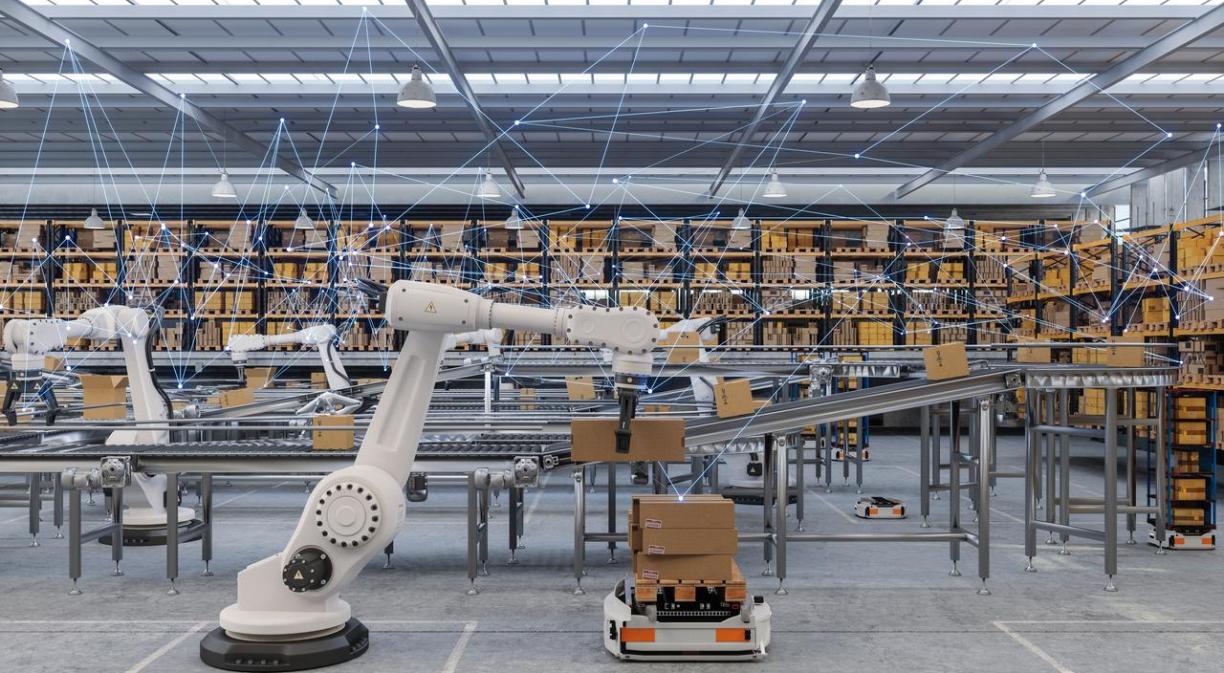The great technological development we have experienced in recent years has supported the latest Industrial Revolution: Industry 4.0. Innovations such as Big Data, the Internet of Things or Artificial Intelligence and Machine Learning have become the necessary tools for industrial robotics and automation to be key to the structural changes it is undergoing.
All this connectivity has resulted precisely in the automation of production processes. This is the smart factory, i.e., the intelligent or connected factory.
What is industrial robotics?
The manufacture of industrial robots, as well as their prior design and development, and their implementation in real processes, depend on professionals with a high technological knowledge, complementing engineering studies specialised in the field of robotics, with others that form a transversal basis in mathematics or programming.
Its aim is to replace workers performing repetitive or dangerous tasks with machines or computer software to perform them, automating those tasks. In this way, workers are no longer exposed to hazardous activities and can retrain for much more interesting and monotonous jobs.
The griwth of industrial robotics is already key in a number of very different sectors, such as military, automotive, logistics or even commercial, and is already consolidating itself as a megatrend that is transforming the economic and business landscape of industry. According to the International Federation of Robotics, investment in robotics by companies will reach 66.9 billion dollars by 2025.
What are the benefits of industrial robotics and automation?
Industrial automation relies, of course, on robotics. This is not to be confused with robotic process automation, which is also very much on the rise. The latter, known by the acronym RPA, refers to a type of virtual robot software that automates processes, e.g., business processes, through the use of other technologies such as Artificial Intelligence and Machine Learning. Due to the ease with which they can automate tasks, RPAs have gained a place in Industry 4.0 environments, as these bots are used to gather information, thanks to connectivity.
The main benefits of industrial robotics and automation for industrial sectors are increased productivity and cost reduction. In addition, automation results in greater flexibility and easy scalability according to the specific production needs and an acceptable implementation cost for companies.
All this results in an improvement in the performance of the contracted work. As the consulting firm Deloitte points out, productivity, cost of implementation and improved compliance are the benefits that 90% of organisations value most, and they highlight that the implementation of robot programmes “have exceeded their expectations” in these benefits.
In addition, for workers it also brings benefits since repetitive tasks that add little value to the production chain, dangerous activities or those that require great precision, have an ally in robotics, allowing them to direct their efforts to other types of actions within companies where they can assert their qualities as professionals.
Types of industrial robotics
In order to meet production needs, there are different types of robots, depending on the type of industry in which they are to be implemented, fixed robots, which are designed to perform the same task uninterruptedly. They perform simple, repetitive tasks.
There are also programmable robots that can be used for different tasks, precisely because they can be reprogrammed. And finally, flexible industrial robots that can work in coordination with other machines because they depend on a central system that coordinates them all.
Robots can also be classified according to the tasks they perform, whether they are manipulation or repetition tasks, and there are also intelligent robots that are connected to their environment, bots (already mentioned) or nanobots, which are in the experimental phase.
Industrial processes where robots are used
One of the sectors in which robotics has made most inroads is the automotive sector, along with the electronics sector, due to the capabilities it offers in assembly tasks, the chemical and food sectors. Through the use of sensors, cameras, transmission systems and technologies such as AI, they are also perfect for logistics tasks such as product sorting or palletising.
It should be noted that industrial robotics and automation work goes far beyond production processes. The qualitative leap in the healthcare sector has benefited greatly from the use of automation work in areas such as healthcare, cleaning and disinfection, and even surgical care.












